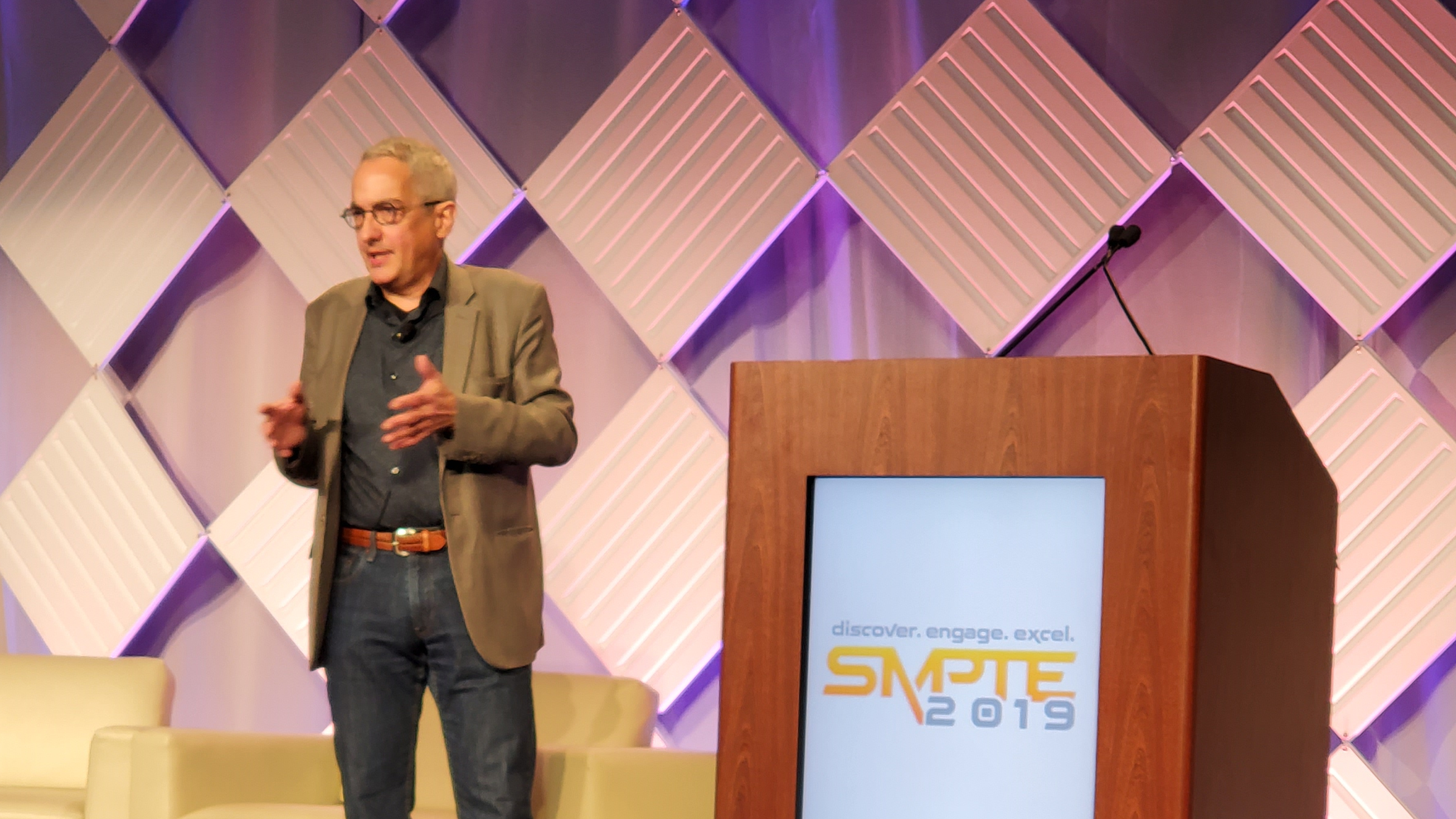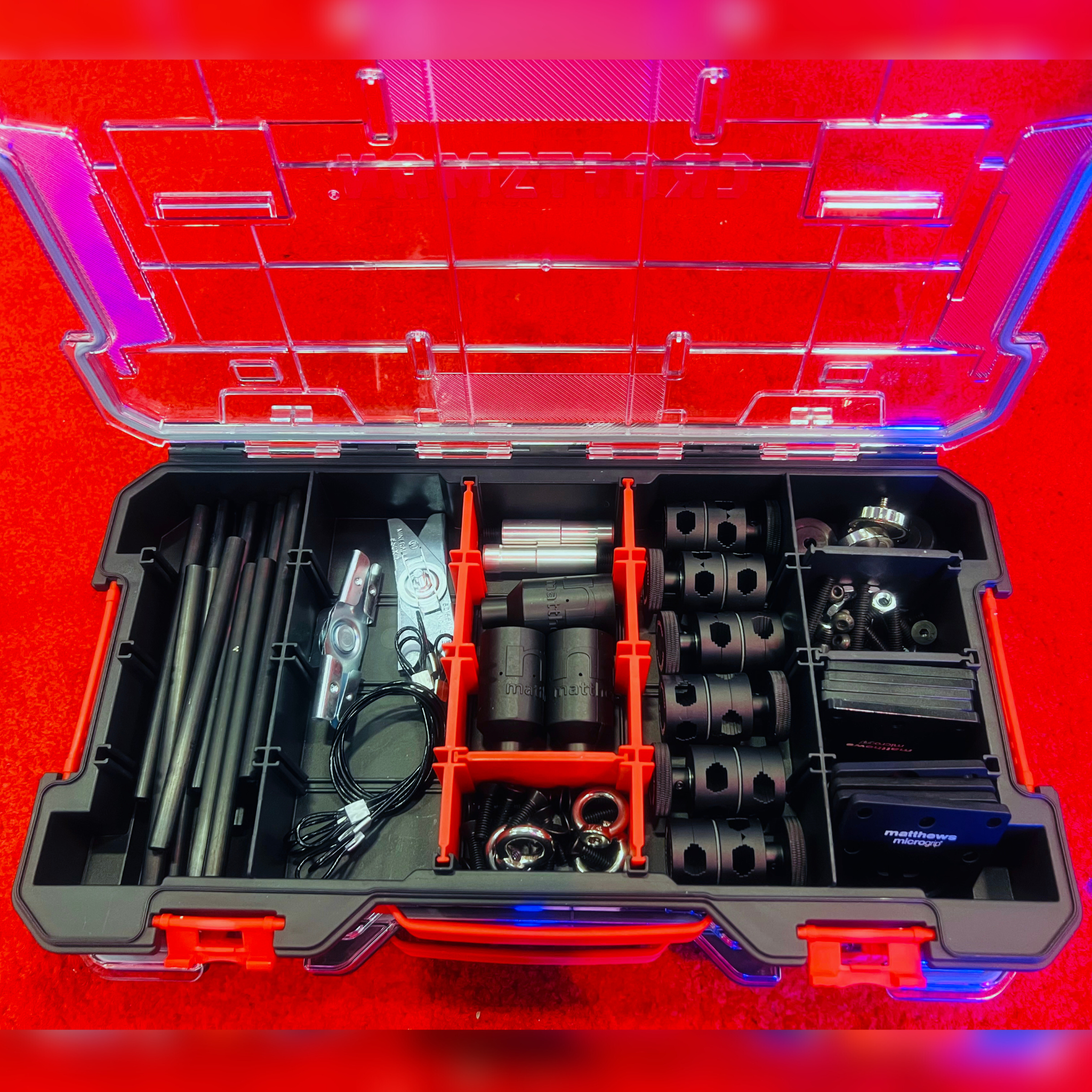SMPTE 2019: MovieLabs CTO Lays Out Vision for Media Creation in 2030
LOS ANGELES—It might seem like a tall order to chart where content production should be in 10 years, but that’s exactly the task MovieLabs tackled in a recently published white paper laid out by Jim Helman, CTO of the non-profit research lab, during his Oct. 22 keynote during the 2019 Annual SMPTE Technical Conference and Exhibition at the Westin Bonaventure Hotel.

“So, why are we doing this now?” Helman asked, rhetorically. “The move is motivated by several changes… [that are coming] together to really create a transitional point now where we have the opportunity to change the future of production in a way that will benefit the entire community.”
Chief among the changes are the growing availability of bandwidth and the availability of real-time computing engines, which at the moment are most widely deployed in pre-visualization applications but hold the potential to unlock many other workflow benefits in television and motion picture production, he said.
The white paper, “The Evolution of Media Creation,” was authored by contributors from MovieLabs member studios, including Paramount, Sony Pictures, Universal Studio, The Walt Disney Studios and Warner Brothers Studios.
It lays out 10 principles underpinning MovieLabs’ vision for 2030 that are categorized into three buckets: a new cloud foundation; security and access; and software-defined workflows.
“Most fundamental… is that assets go up to the cloud, and they stay in the cloud,” said Helman. “And the applications come to the assets rather than transferring files… from one facility to another facility.”
For this goal to be achieved, it will be important for vendors to be able to deploy their applications into multi-cloud environments. Helman acknowledged that this goal “is a little bit aspirational” because it is very likely post houses and VFX facilities will continue to work in their own cloud.
“We need to enable the ability to have multicloud applications…,” he said. “We think… [it is] very important to have abstraction layers that can allow these applications to be easily moved to whatever cloud is needed or to share data across clouds.”
Of course, with the cloud at the foundation of production 10 years hence, security and access become critical. Uploading assets to the cloud will mean media organizations no longer have “a well-defined perimeter” around their facility, and the same is true for hybrid cloud setups, he said.
“So, we really need to think about security and make it more asset-centric and more capable so you can address a wide range of production,” said Helman.
Helman introduced the concept of scalability to securing media assets in the cloud. While one studio might want to employ the most stringent set of security measures for a high-budget blockbuster, another, such as the producer of a cooking show, may not be too concerned about a segment showing up on YouTube because little revenue is at stake, he said.
The white paper also advocates for software-defined workflows in the future. Real-time engines, such as the Epic Games Unreal Engine, will one day enable a new degree of flexibility in building media workflows, he said.
Get the TV Tech Newsletter
The professional video industry's #1 source for news, trends and product and tech information. Sign up below.
Phil Kurz is a contributing editor to TV Tech. He has written about TV and video technology for more than 30 years and served as editor of three leading industry magazines. He earned a Bachelor of Journalism and a Master’s Degree in Journalism from the University of Missouri-Columbia School of Journalism.

